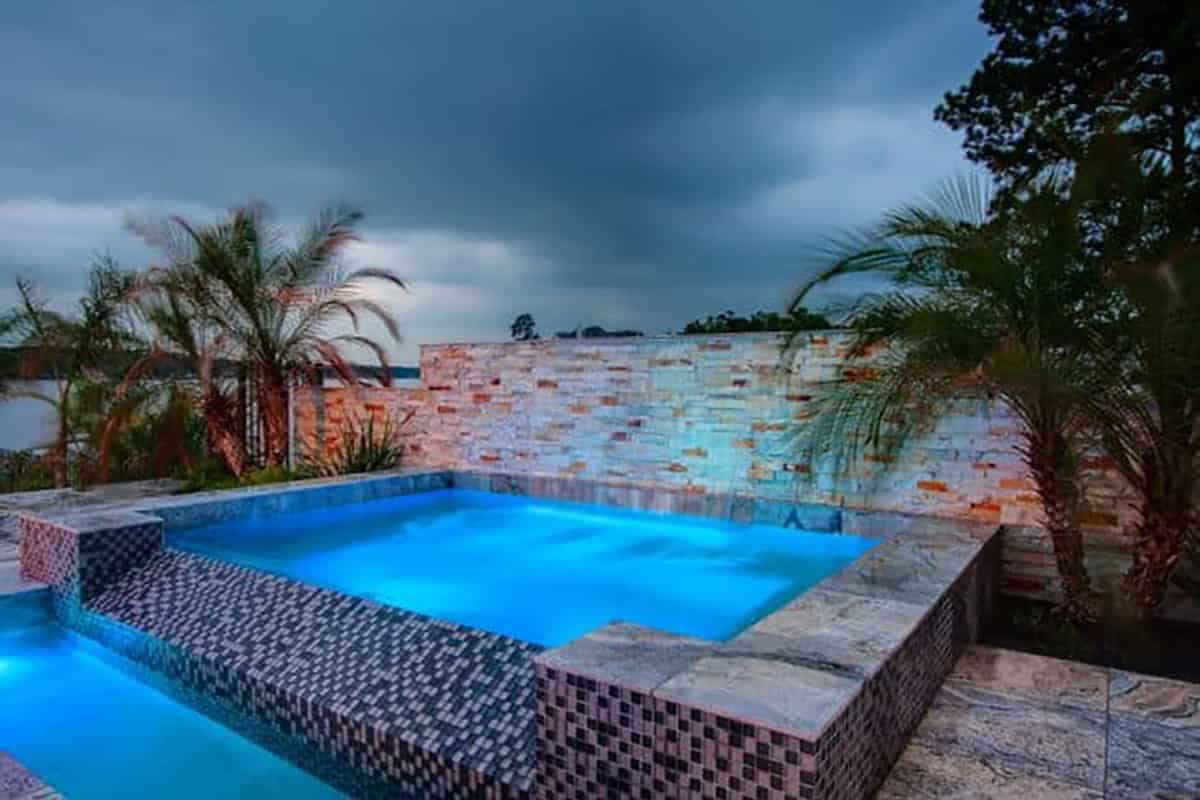
It’s storm season and your pool can be protected if you plan ahead! Hurricanes are an unfortunate fact of life in for the Gulf Coast. The hurricane season begins in June and runs through November. Fortunately, we have instant access to the world around us and are warned when a serious storm is headed our way, whether that is rain, hail, or hurricane force winds. Part of getting prepped is taking care of the things outside.
Following are tips on how to minimize the damage to your swimming pool that might be caused by a tropical storm or hurricane.
If you have a cover that is held on by water tubes or some other type of weights, do not put it on. These types of covers will be easily blown off into the yard or into the pool by high winds.
If you have a safety cover (this cover is attached to anchors in the deck around the pool), put it on. These covers are designed to hold even in the winds of a hurricane. Make sure that your straps are taut but not so tight that the spring (if you have this type) is completely compressed. It is also a good idea to put some padding between the cover and the edge of the pool. This will prevent the cover from being abrased by the edge of the pool as it moves with the wind. You can use old towels, water tubes, etc. for this.
Ensure your skimmer lids are secure. If you are in need of a replacement, we suggest you remove as they can become a flying object during high winds.
Turn off your filter system before the storm hits, but do not drain the system. This will prevent the motor from burning up if the system becomes clogged or the line voltage drops. By leaving the water in the filter system, the extra weight will help hold down the equipment.
Turn the pump and any other power supply off. If you can remove the pump, do so and store it in a dry place. If you cannot remove it, wrap the pump motor, time clock, light transformers and electric heaters with a waterproof plastic membrane and tie it securely in place to prevent debris and driving water from entering.
Super-chlorinate your pool (Shock it). This will help prevent the pool water from becoming contaminated. Add a “shock” dose of liquid or granular chlorine.
Do NOT drain your pool during storm season. A pool shell can float like a boat. They can literally “pop out” of the ground if emptied. This is caused by hydrostatic pressure. Basically, the pressure of all the water in the pool keeps it in the ground because on the other side of the shell is water that saturates the ground around it. The pressure of the water surrounding the pool shell squeezes the pool until it pops up. Therefore, keep the water level consistent. If you feel you must lower, do not drain more than 1-2 feet from the top edge of your pool.
We suggest that you do not store pool furniture in your pool as this can damage not only your pool but the pool chemicals can in turn damage the furniture. Remove and store all furniture and loose objects in your backyard area.
If your pool has a screened enclosure, you will need to protect this as well. Some damage to the frame of the screen structure may be prevented if you provide a “vent” for wind to flow through. Consider removing screen panels on opposite sides of the enclosure by pulling out the vinyl spline that retain the panels.
If you covered your pool, remove the cover and replace the pool furniture. It may be tempting to drain your pool if it was uncovered, but again, do not drain it. The ground will still be saturated and you don’t want to run the risk of it popping up.
Remove debris from your pool first. Remove large objects by hand or use a pool rake or skimmer net to remove smaller debris from the pool. Do not attempt to use the pool’s vacuum system for debris that is likely to plug the plumbing.
Let the motor dry for at least 24 hours. If you couldn’t remove your equipment before the storm and it was underwater, get it checked out. When electricity has returned, call a licensed, insured pool repair company to thoroughly inspect your pool and equipment.
Clean the filter and run the system 24 hours a day. When the water has attained proper clarity then reset the time clock for a normal daily cycle.
Balance water pH, super chlorinate or shock your pool, and run the filter until the water becomes clear. Lower the water level to the middle of the skimmer and test the water and make any necessary chemical adjustments.
Finally, it is important to monitor the overall operation of the entire system for several days after the storm to be sure everything is operating properly.